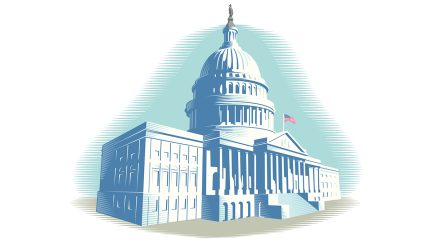Want the latest retirement plan adviser news and insights? Sign up for PLANADVISER newsletters.
Can 403(b)s and CITs Some Day Be Friends?
Legislation to permit the pooled investment into 403(b) plans continues to inchworm its way through Congress.
403(b) plans still may not use collective investment trusts, an investment similar to a mutual fund that is subject to fewer regulations and requirements and often carries lower fees for defined contribution retirement plans. This is despite other defined contribution plans, such as 401(k)s and 457s, being able to use CITs and, according to recent data, doing so in greater volume every year.
At the moment, the best chance in the near-term for 403(b)s to access CITs is a bill in the U.S. House of Representatives that could come up for vote in early March. The outcome will be closely watched by many retirement plan advisers and sponsors, some of whom pointed to the lack of access as a major miss in the passage of the SECURE 2.0 Act of 2022.
One of the original three bills that later became SECURE 2.0 actually permitted 403(b)s to use CITs by amending the necessary tax and securities laws. This bill was known as the Securing a Strong Retirement Act and emerged from the House Committee on Ways and Means.
Ways and Means only had jurisdiction over the tax provisions, however, and when the House Committee on Financial Services, then controlled by Democrats, asserted jurisdiction over the securities provisions, the relevant amendments did not move forward. This resulted in a SECURE 2.0 that updated the required tax law to permit CITs in 403(b) plans, but not securities law.
A source knowledgeable of those negotiations, who declined to be named, noted that this was not an issue among Democrats on Ways and Means or in the Senate.
Since omitting the changes that would allow for 403(b) use of CITs is not considered a technical error, it cannot be fixed through a technical corrections bill, only through new legislation.
One such pending bill that would make the change is the Retirement Fairness for Charities and Educational Institutions Act, introduced by Representative Frank Lucas, R-Oklahoma. The bill was proposed in May 2023 and was voted through the House Financial Services Committee in December 2023. The bill would update the required securities laws to permit both CITs and insurance separate accounts in 403(b)s.
Representative Sylvia Garcia, D-California, offered one amendment to the bill at a mark-up hearing in May which highlighted the core objection to including CITs in 403(b) plans. Her amendment would have limited the use of CITs to 403(b)s that are subject to the Employee Retirement Income Security Act.
403(b) plans sponsored by a private entity, such as a charity, are typically subject to ERISA, but those that are sponsored by state or local governments or by churches are not required to follow ERISA, though they may opt into it.
Garcia argued that only ERISA-governed 403(b)s “have enough federal safeguards in place to keep their money safe,” noting that CITs lack the same “SEC investor protection framework” as traditional mutual funds, and this could leave non-ERISA 403(b) plans vulnerable, since they would lack SEC and ERISA oversight.
Though this amendment was defeated, the case had some currency among other Democrats on the committee, as it was defeated by a party-line vote of 26 to 21.
Lucas noted in defense of his bill that other non-ERISA plans, such as 457s, are permitted to use CITs, and non-ERISA 403(b) plans are still required, usually by state law, to screen investments.
The next opportunity to pass the Retirement Fairness for Charities and Educational Institutions Act is expected to be in early March, when the two continuing resolutions currently funding the government expire. No companion bill has yet been taken up by the Senate.
You Might Also Like:

403(b) Plans Have Special Considerations When Complying with SECURE 2.0

Legislation Reintroducing CITs to 403(b) Plans Gains Momentum

House and Senate Reintroduce Bills to Permit CITs in 403(b) Plans
« How Financial Advisers Can Beat Out Popular ‘Finfluencers’
